Why Are Soils Neglected? – by Chris Stapleton
This blog first appeared on Chris Stapleton’s LinkedIn. Chirs will be speaking at CIEEM’s upcoming conference ‘The Role of Soils in Nature Recovery.’
As a soil scientist and EIA manager using soil information within the planning system for more than four decades, this is my response to the recent World Soils Day, and the status of soils within the EIA process.
Despite the worthy rhetoric of the World Soils Day, soils are a Cinderella subject when compared with the emphasis given to other subjects like ecology and landscape, for instance. I think this is because for most people soils are unknowable in the sense that you can’t see them unless you catch a glimpse of topsoils when agricultural land is being ploughed. Also, finding out about soils involves specialist field survey using a combination of soil auger cores and soil profile pits to describe soil characteristics and to determine the different soil types within a study area.
Unfortunately, the language of soil specialists can also be too academic for effective communication. My approach is to keep it simple and avoid esoteric terminology, so perhaps I can demystify the subject and make soils a little more knowable.
A soil profile is a vertical cross section through a soil showing the topsoil and subsoil, both of which are required for a soil to function and provide a range of ecosystem services, such as food and other biomass production, flood water attenuation and carbon storage. In fact, many ecosystem services are derived from soils.
Soil characteristics reflect the climate, soil organisms, topography, and underlying rocks (parent materials) in a given location. Soil types can vary across relatively small distances, with different soils having different capabilities. On soft parent materials like clays, soils can extend to depths of 1.2m or more, and remarkably (given how long they have been developing) on hard parent materials like Carboniferous Limestone, they can consist of nothing more than about 20 to 30cm of topsoil, where their functions are limited in the absence of a subsoil.
The first photo below illustrates some soil basics. In most soils (other than peat) the organic matter and carbon is concentrated in the dark brown topsoil which lies above a lighter coloured subsoil developed (in this example) in London Clay. Subsoils reflect the nature of the parent materials, and they are important because they have porous structures that provide drainage channels supplying the oxygen necessary for root respiration and the uptake of nutrients. These subsoil properties support plants that start to grow in the topsoils, before extending their roots down the drainage channels and into the porous structures below. Note the well-defined subsoil structures in the first photo, and the largely vertical drainage channels between them.
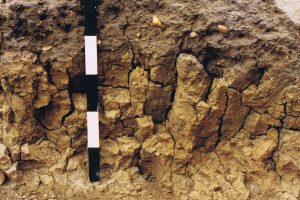
Soil developed in London Clay

Upper Subsoil Structures
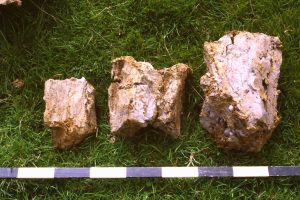
Lower Subsoil Structures
Soils are a finite resource that form at different rates in different parent materials over long periods of time, and it is said by some that they can take 100 years to form just 0.5 cm, but they can be lost almost instantly because of development. Therefore, soils displaced by hard development should be conserved. Good practice in soil handling methods and the use of suitable machinery will avoid the compaction and destruction of soil structures and achieve successful land restoration and habitat creation/translocation. The monitoring and enforcement of planning consent conditions in respect of soil conservation is often neglected, however.
During my career, I have carried out soil and Agricultural Land Classification surveys throughout the UK and dug soil pits in many different soil types. I have selected some photographs to illustrate how soils reflect the nature of the parent materials within which they have developed, and these are shown below.
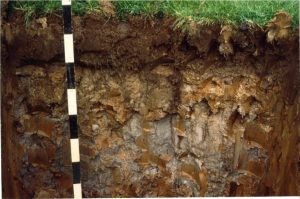
Soil Developed in Shale
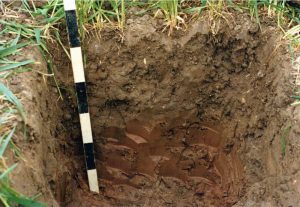
Soil Developed in Red Marl

Shallow Soil Over Carboniferous Limestone
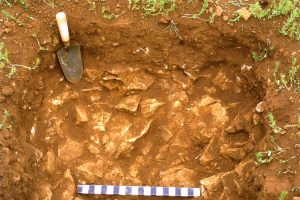
Shallow Soil Over Oolitic Limestone
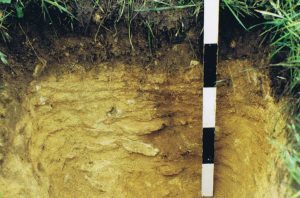
Soil Developed in Weathered Sandstone

Soil Developed in Chalk

Soil Developed in Loam
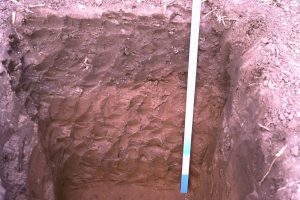
Soil Developed in Sand
As a result of my experience, and what I consider to be the current unsatisfactory protection of soil functions within the planning system I was asked to lead on the production of new IEMA guidelines for the assessment of development impacts on land and soil within the EIA process. I am pleased to say that the guidelines are nearing completion and scheduled for publication sometime in the New Year, thus raising the profile (pun intended) of soils, just as Cinderella did meet her prince…. eventually.
I hope that you have enjoyed this insight into soils and find them more knowable.
Chris will be speaking at our 2023 Spring Conference: The Role of Soils in Nature Recovery on 21st March.
Blog posts on the CIEEM website are the views and opinions of the author(s) credited. They do not necessarily represent the views or position of CIEEM. The CIEEM blog is intended to be a space in which we publish thought-provoking and discussion-stimulating articles. If you’d like to write a blog sharing your own experiences or views, we’d love to hear from you at SophieLowe@cieem.net.
